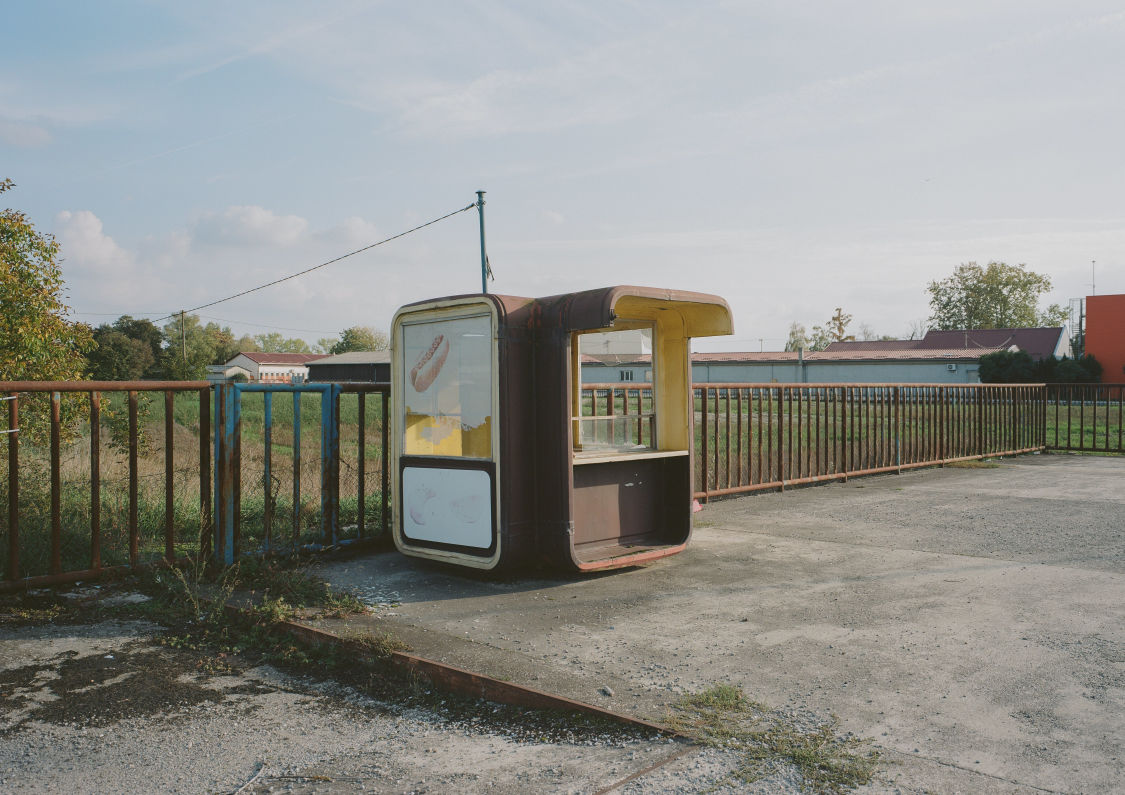Today’s topic is a long-term review of the FUJI GSW690III, a camera that has become a favorite of mine since I delved into the world of medium-format photography about two years back. Initially, I was eyeing 6×6 or 6×7 cameras, but considering the hefty price tags that often come with medium format gear, I needed to stick to a budget of no more than $600. My criteria were clear: the camera had to feature either an interchangeable lens or a fixed wide-angle lens.
After some thorough research, I stumbled upon Fuji’s lineup of medium format cameras, ranging from 6×45 to 6×9 formats. While the Fujifilm GA645 caught my eye initially, its price was way beyond what I could afford. However, everything changed when I stumbled upon a video that completely shifted my perspective, making me set my sights solely on the Fuji GSW690III.
From that moment on, I immersed myself in the world of medium format photography, scouring through Flickr galleries, diving into old discussion boards, and devouring whatever videos I could find. Eventually, after a week of bidding wars and negotiations on eBay, I struck gold when a seller from Japan accepted my offer of $550. Hell yeah!!
Before I delve into the ins and outs of this camera, let’s rewind the clock and reminisce about why it holds a top spot in my collection. Get ready for a stroll down memory lane that’s as smooth as jazz on a Sunday morning.
Affiliate Disclosure: As an Amazon Associate I earn from qualifying purchases. Purchasing via provided links/banners comes at no additional cost to you. Analog Dayz only recommends products and/or services that are insightful and helpful to readers. For more info please read our Affiliate Disclaimer.

Fuji GSW690III – Unveiling the Legend
Back in February 1992, Fuji dropped the GSW690iii/GW690iii like it was hot! Priced at a cool $1,408 this rangefinder was the epitome of a mechanical marvel, but it didn’t have a fancy internal light meter inside. Picture this: Fuji produced four-exposure rolls of film to speed up processing and allow the camera to be passed to another photographer. Japanese photographers efficiently snapped tourist hotspots, all thanks to Fuji’s genius move to streamline the processing process. Talk about efficiency!
Now, let’s talk prints. Back in the ’80s and ’90s, photographers could score contact roll prints on the cheap. Just imagine, a long roll of contact-sized paper easily sliced into individual proof papers—boom, instant gratification! And with the GSW690iii capturing some of the crispest, jaw-dropping shots, it’s no wonder everyone wanted a piece of the action.
But wait, there’s more! Fuji didn’t just stop at functionality; they spiced up the exterior with sleek curves and rubberized coatings, making this bad boy a sight to behold. And who could forget the nifty push-button spool release and the tiny spirit level perched on top? Sure, it might just be there to keep things balanced, but hey, every little detail counts.
Let’s not forget the rangefinder’s baseline length of 59mm—it’s the secret sauce behind those pinpoint sharp shots!

Yo, Inspect That Cam!
The FUJI GSW690III keeps it simple with just a few settings—easy peasy, lemon squeezy! Whether you’re already rocking it or eyeing it up, here’s the lowdown on what to scope out:
- Check for any signs of fungus or fogging within the viewfinder or lens.
- Inspect for damages or scratches on the exterior and lens.
- Test the shutter speed ring for smooth movement.
- Assess the aperture ring for crisp, responsive clicks.
- Dry fire the shutter with the backdoor open, utilizing both shutter buttons.
- Test various shutter speeds and apertures to ensure smooth operation.
- Verify the movement of parallax lines within the viewfinder when zooming.
- If possible, test with a film roll to ensure proper insertion and winding.
- Check for deteriorated light seals, replacing them if necessary.
- Monitor the shutter actuation: At the camera’s base, track shutter actuations for maintenance. Each count represents 10 shots, e.g., 150 means 1,500 shots. Upon reaching 999 (9,990 shots), it resets to 000. Note: It counts 10 shutter actuations as 1 for easier tracking.
Pro Tip: Beware of listings for the Fuji GSW/GW 690III on eBay or other platforms, especially if advertised as ‘Near Mint’ or ‘Mint’ with shutter counts between 000 – 100 but showing significant exterior wear. This could indicate heavy prior use. Additionally, the seller may mention in the Ad a recent CLA (Cleaned, Lubricated, and Adjusted) servicing, although heavy usage on the camera is still visible. It’s advisable to contact the seller for clarification.
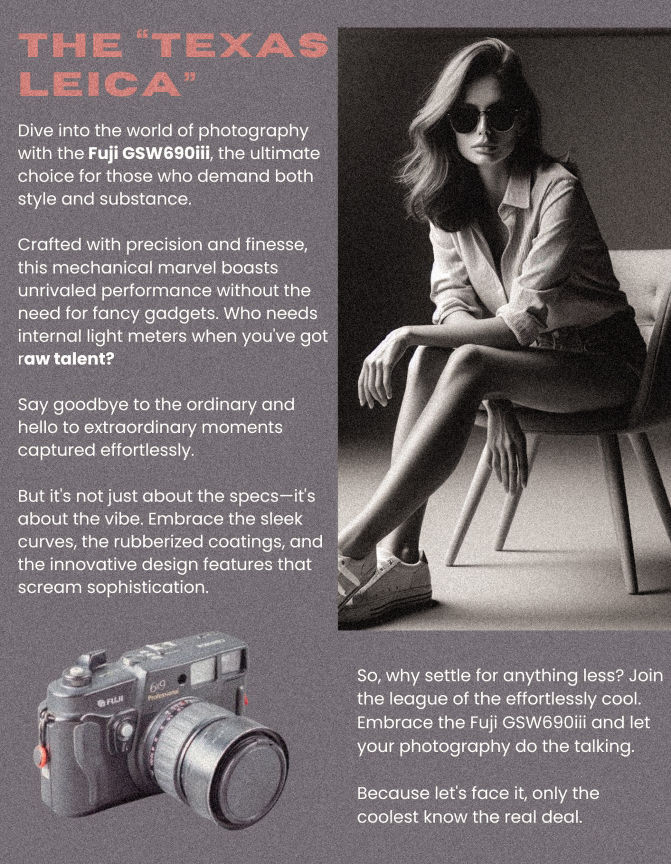
HOW TO USE Fuji GSW690III
After completing the pre-check, it’s time to unlock the secrets of using this bad boy. And guess what? These tips work for both the FUJI GW690III and FUJI GW670III.
To crack open the camera back, lift and press down the camera back lock. Closing it is just as easy—keep that lock standing tall, press the camera back against the body, and give it a satisfying snap.
Now, onto the film selector lock—pull it while twisting it to set the film selector for your chosen film: 220 rolls for 16 shots, 120 rolls for 8 shots, and 120 half-length rolls for 4 shots.
Make sure you’ve got your film selector and pressure plate set for the film du jour (120 or 220). Using the wrong plate means no picture-perfect shots.
Next up, tackle those spool knob release buttons—tiny red buttons on both the supply and take-up sides. Pop that empty spool into the take-up chamber and press the take-up spool knob.
Film loading time! Place your film in the chamber and press that film loading knob. Pro tip: It’s easier to load up top. Guide the film paper leader through the channel, slot the tip into the take-up spool, and wind it around. When the arrow marks line up with the film start mark, call it quits on the winding.
Now, here’s where the real magic happens: prevent any slack by pressing down on that leader paper near the supply side. Keep it taut with the film advance lever while you snap that camera back into place.
And there you have it—loading film like a pro. Just remember, the real fun starts when you hit that shutter button!
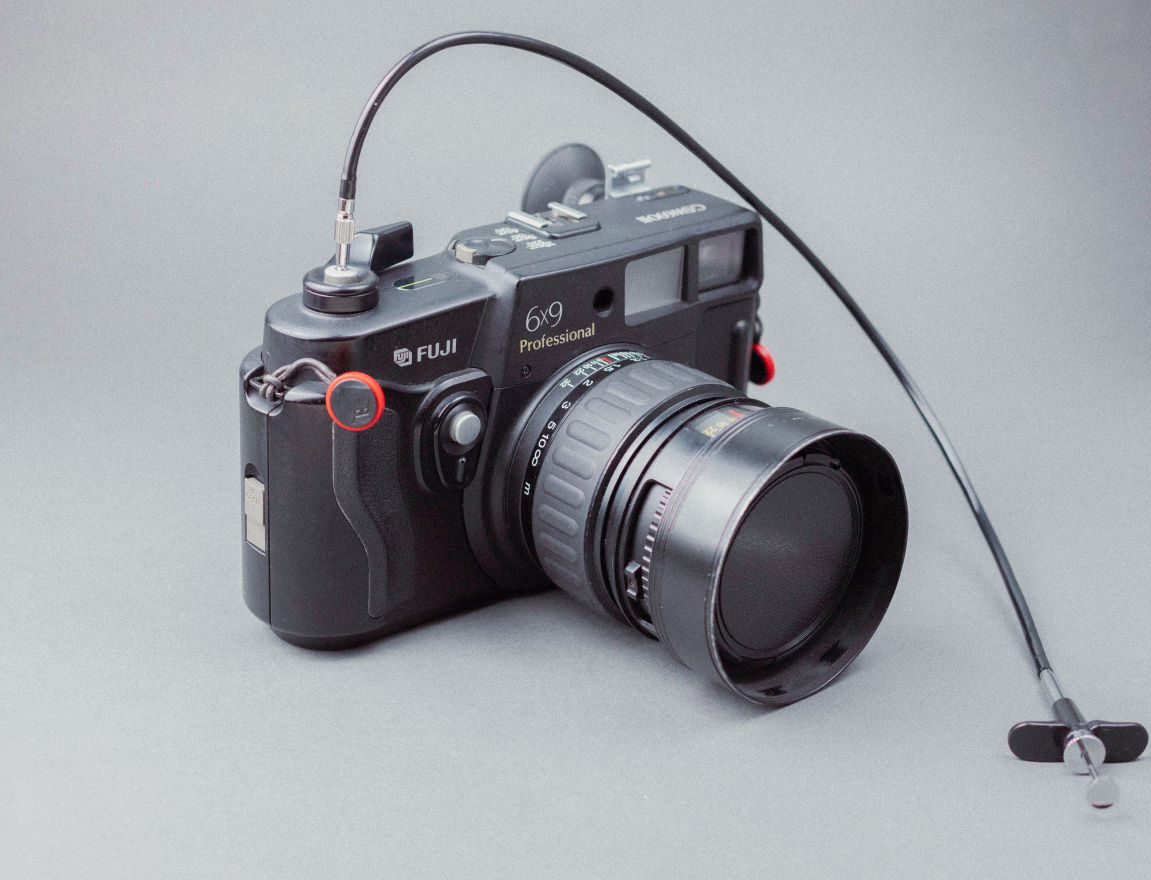
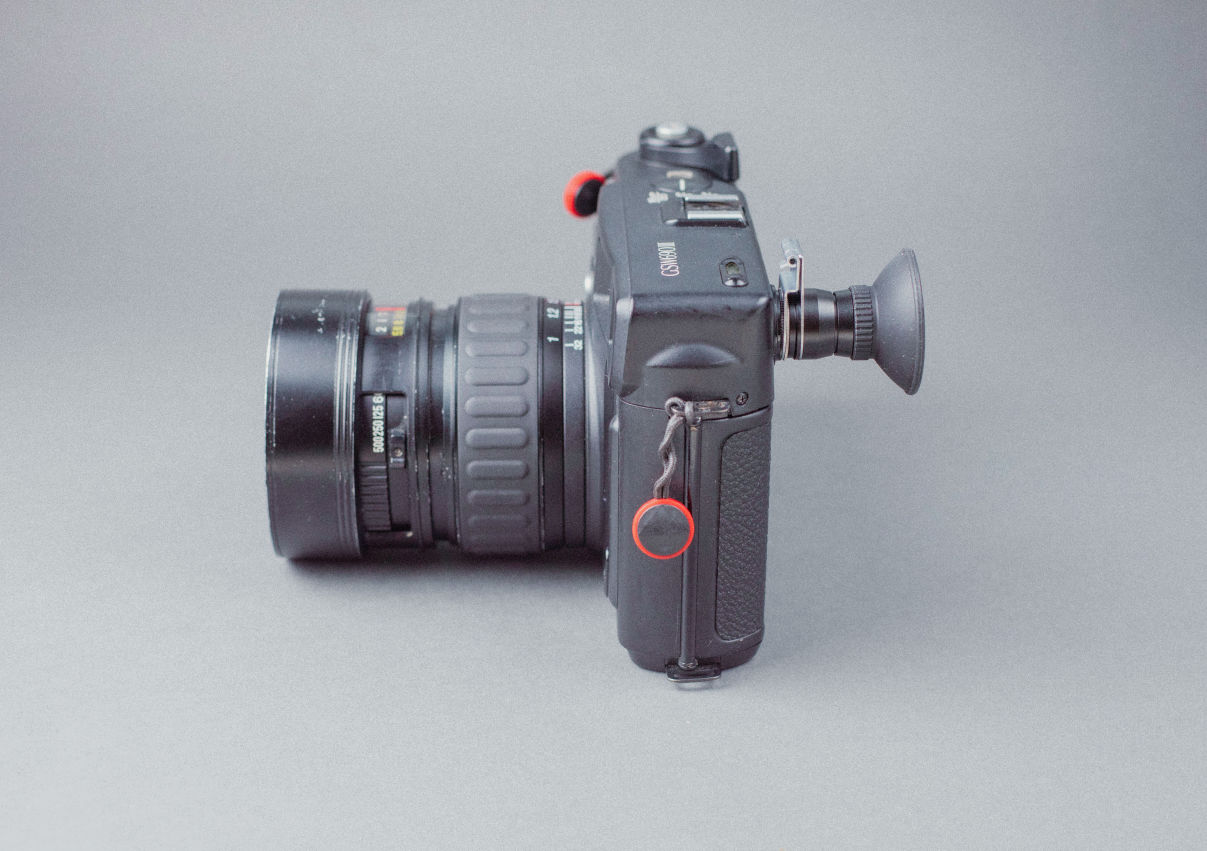

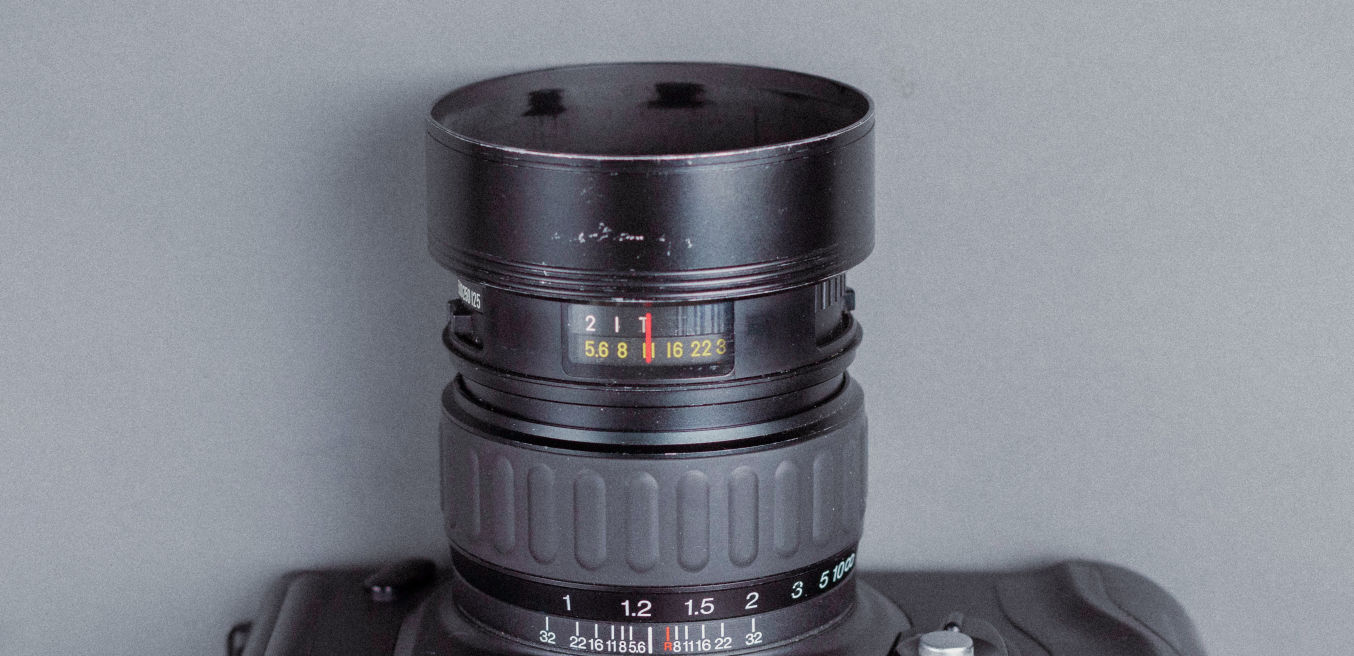
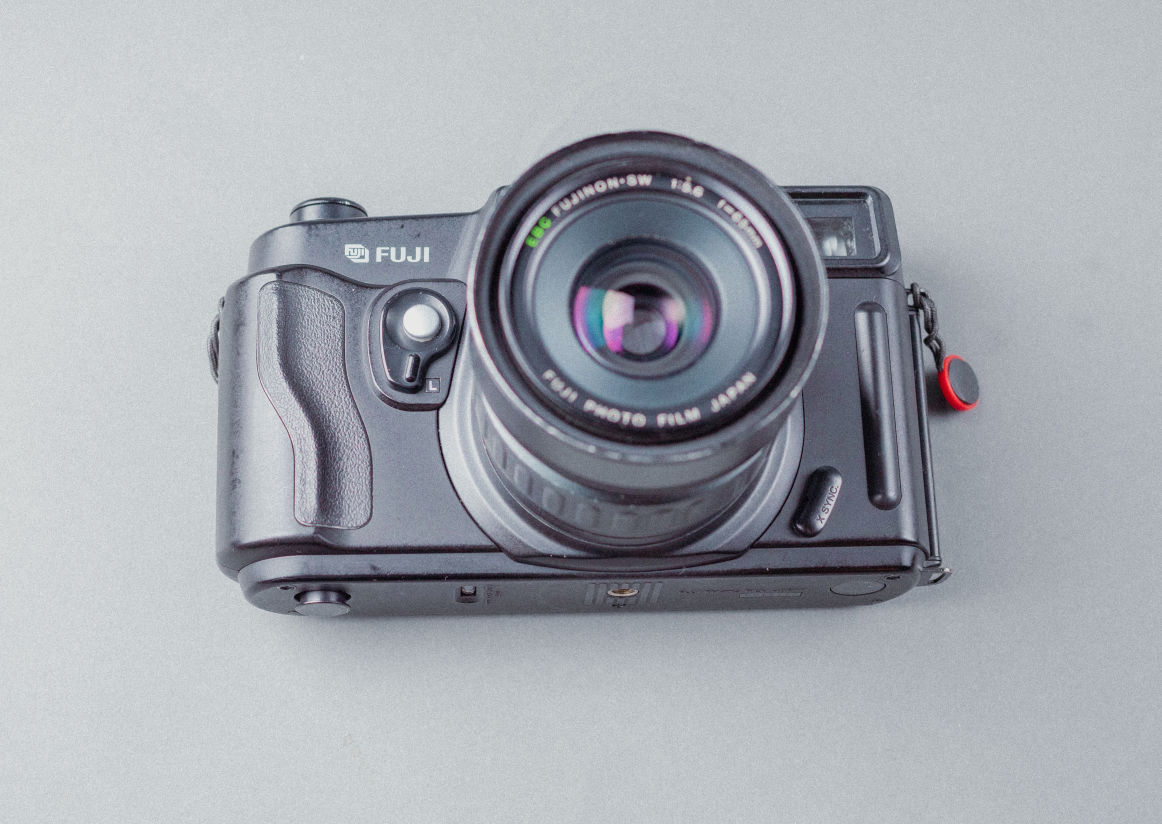

Fine-Tuning Your Camera:
Let’s breeze through the essentials of mastering this Fuji GSW690III, sprinkled with a bit of wit and charm:
Unlocking the front shutter release: If you spot an “L” on the shutter release, it’s on lockdown. Just push the front shutter release lock toward the lens to set it free.
Built-in lens hood: Need some shade? Just pull out the built-in lens hood and you’re good to go!
Set the shutter speed selector and aperture ring: Pull out the lens hood, dial in your settings, and make sure those shutter blades are clicking into place like they’re at a fancy cocktail party.
Focusing the lens: It’s all about getting that perfect focus. Center your subject using the viewfinder eyepiece, then twist the focusing ring until those double images merge.
Composing your picture: Use the bright frame to frame up your shot. Watch as the frame lines move to correct for parallax—just like magic!
Film winding and shutter cocking: Wind that film advance lever like you’re revving up a race car—twice for good measure. For a dry test, open the camera backdoor (only if there’s no film inside). Remember, you can’t press the shutter release with the backdoor closed.
T-Mode: Want to get artsy with long exposure shots? Set that shutter speed to “T” and let the magic happen. Don’t forget to cover your lens afterward, though—nobody likes a shaky image.
Taking infrared pictures: Measure the distance, set it to the infrared mark, and voila! You’re ready to capture some out-of-this-world shots.
Lens Cap: Seriously, check if the lens cap is off. We’ve all been there—the perfect shot ruined by a forgetful moment.
Lens filters: This camera loves a good filter—just make sure it’s a 67mm one, and you’re golden.

Photo Samples



Pros and Cons
Pros:
- Easy-to-use interface
- Exceptional lens quality
- Compact design for its format
- Outstanding build quality ensures durability
- Operates independently of batteries
- Dual shutter buttons for enhanced functionality
- Versatility with three selector film sizes
- Easily convertible to a 35mm panoramic camera
- Produces large, detailed negatives
Cons:
- Limited by “T” mode functionality
- Despite its compactness, may feel weighty on occasion
- Lacks built-in light meter for exposure assistance
- Many folks dislike the 6×9 aspect ratio
What type of gear and films should I use for the Fuji GSW690III?
Here’s what you’ll need to level up your camera game: a shutter release cable, an external light meter, and some 120 film. But hey, there’s no one-size-fits-all gear here—each has its perks and quirks.
Now, check out these top recommendations:
- Lightmeters:
– TTArtisan Light Meter
– Sekonic FLASHMATE L-308X
– PENTAX Digital Spot Meter Spotmeter - Tripods:
– K&F Concept Camera Tripod
– Manfrotto Tripod - Film Stocks:
– Kodak Portra 160
– Kodak Portra 400
– Fuji Provia 100F
– Kodak Ektar 100 - Viewfinder eyepiece:
–Nikon Dg-2 Eyepiece Magnifier - Shutter release cable:
– Mechanical Shutter Release Cable - Lens filters and step-up rings:
– Tiffen Black Pro mist
– Neewer 7pcs 49mm-77mm Step-up rings
Pro tip: Go big with your lens filter size so you can use it on all your lenses. It’s all about versatility, baby. Now, go on and pick what suits your style best.

Final Impressions
We all want that perfect camera, right? Well, this one gets a big thumbs-up! It’s getting a lot of love lately, and for good reason. It takes awesome photos with 120 films, and you can take it anywhere.
If the Fuji GSW690III or GW690III are a bit too pricey for your wallet, fear not! You can always check out their older brothers, like the Mark I or II, or the Fuji GL/BL 690 models. The GL/BL models come with interchangeable lenses and won’t break the bank. Who said quality photography had to cost an arm and a leg, right?
Would I buy the Fuji GSW690III again? Absolutely! If I had more cash, I’d buy a bunch of these Fuji 690 cameras. They’re a great buy if you’re okay with using the “T” mode and carrying an extra light meter. But hey, it’s not super cheap.
Also, it’s worth noting the issues with the aspect ratio of 6×9, where you might end up cropping too much and wasting too much of the film negative. Personally, I don’t mind cropping sometimes, but I know some people have a problem with it.
Still, if you’re keen to try medium film photography or you’re already a pro, this camera is a winner.
So, until next time, folks! Pssst, take a quick peek at my latest post.
P.S. Got any sneaky tips or tricks up your sleeve? Drop ’em in the comments below! Let’s keep the conversation rolling.


